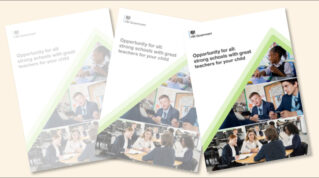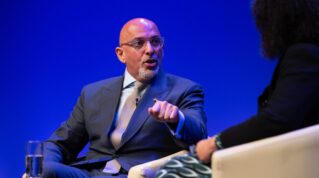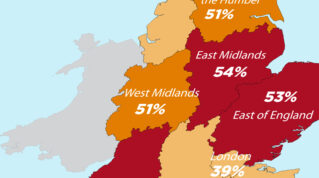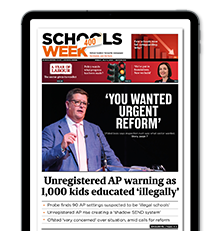The schools white paper signals the start of an exciting time for education. The bold ambition of a future where schools prioritise collaboration over competition, with high targets for numeracy and literacy, is one we should all be willing to get behind.
Leaving aside the headline promises, one of its most exciting elements is the clarification of the role of local authorities (LAs). For too long, they have been accountable for the quality of education in their area while being unable to take decisive action – reduced to the role of onlooker as non-maintained schools took matters into their own hands. Now that they can establish their own multi-academy trusts (MATs), they can contribute to system improvement, shaping the standard of education in partnership with current strong trusts.
However, LAs can’t be both poacher and gamekeeper. The detail of these arrangements must provide reassurance that appropriate firewalls are in place to ensure that these new MATs operate under the same framework as current trusts; that governance does not sit with the same officers who are meant to be holding executive leaders to account. Otherwise, we will see a new two-tier system established.
In reality, only time will tell whether LA trusts function any differently from the previous authority system, or whether they are just a re-badging of the same old structure. But this is an opportunity for LAs to define their new roles, and we must hope they seize it by taking the best models from current trusts. Collaboration with trusts as equal partners will certainly need to be the order of the day.
Perhaps more fundamentally, the white paper promises LAs a greater role as advocates for children. New powers will mean they can focus on improving inclusive practice in their areas and ensure every child has the right school place for them. Today’s SEND green paper sets out how government intends to make sure this happens.
Grand plans don’t always result in sweeping changes
But we know from past experience that grand plans don’t always result in sweeping changes. The green paper still needs to become a white paper. And all these policies will then need to be implemented.
In that respect, the ambitious target for all schools to be in a MAT or in the process of joining one by 2030 could well be missed, not least because government will be pushing schools to join trusts while trying to get many trusts to fundamentally change how they work with their peers.
The white paper promotes the idea of trusts working in partnership with each other and LAs, which is a laudable aim. But we will need to see how this functions in practice, particularly with the return of formal examinations. Publishing league tables with these results pits schools against each other as a matter of course, and so we will need real incentives for schools to collaborate. Without these – especially in a time of stretched budgets and scarce resources – it is too easy for leaders to hoard best practice as a means of maintaining superiority over their rivals, or exclude children who will lower results. They will need more than the occasional reminder of their civic duty to overcome that.
An early test of this new collaborative mode will be how grammar schools play their part in this changed landscape. We know the government is keen on using them to drive up academic standards as key parts of strong trusts across the country. But the vast majority of them that have converted remain stand-alones, and there is no question that this is due to a fear of losing their ability to select pupils.
In addition, government confidence in grammar schools’ capacity to support schools in more challenging circumstances, especially those with significant numbers of disadvantaged children and highly deprived and complex communities, is misplaced. Government sources indicate that grammars will have new expectations placed upon them, but they were conspicuously absent from the white paper. More pressure must be placed on the selective sector if plans to unite our fragmented sector are serious.
All in all, the vision set out this week is welcome, but there remain substantial gaps in the blueprint. The reality is undeniably a long way off, and not least because the ongoing challenges of 2022 are more pressing than aspirations for 2030.
















Your thoughts